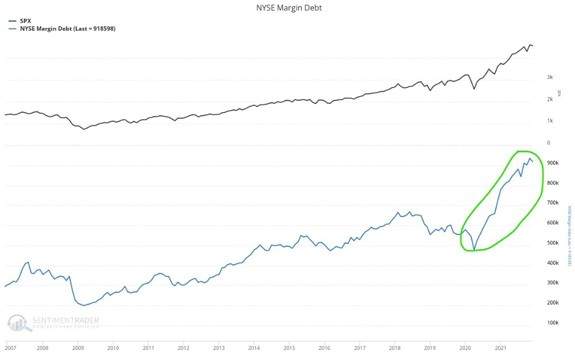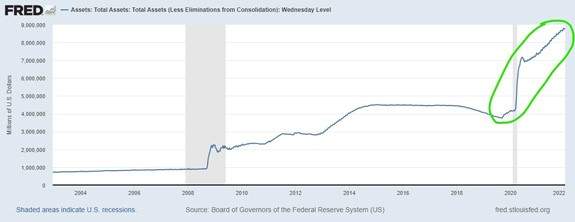After finally receiving a decent snowfall in Ohio this weekend, I did what I normally do.
I took my kids sledding at a nearby park.
Down the hill, then charging back up … rinse and repeat. I did my best to keep up with them, but I eventually ran out of gas, while I marveled at my 7-year-old’s seemingly boundless energy.
I wasn’t the only one impressed. Someone asked where he gets his energy. I joked that it comes from Skittles (a favorite of both of ours … try the Brightside flavors if you haven’t already).
Lately, I’ve been thinking about what energizes the stock market as well. Despite the occasional hiccup, a key energy source has led to incredible gains since the pandemic bear market ended in March 2020.
But, unlike my son’s energy, it’s becoming suddenly clear that the stock market’s fuel source could be quickly depleted.
The Stock Market’s Fuel
Wall Street spends a lot of time and effort breaking down the details of the stock market. Every day begs an explanation for the latest move.
The jobs report, retail sales, inflation … you name it. Now, with earnings season underway, analysts will dissect corporate earnings reports to explain every squiggle.
But all this misses the big picture of what really drives the stock market over long stretches … whether it’s up or down.
Ultimately, it’s all about liquidity.
Just like Skittles for my son, liquidity is the fuel and lifeblood of any bull market … in any asset class. From stocks to housing to crypto, you name it.
The term “liquidity” is a bit of a catch-all. So, what do I mean here?
It’s the availability of cheap and plentiful credit. And just as it can propel asset prices higher, removing liquidity can do the opposite.
The Fed Giveth, The Fed Taketh Away
There have been two huge sources of liquidity that have supported the rally in stock prices since the pandemic low in the S&P 500.
One is margin debt, or money borrowed from brokerages to buy stocks. Since this current bull market started in March 2020, New York Stock Exchange margin debt has jumped by 92% to top $900 billion. That’s more borrowing than in the entire decade before that.

(Click here to view larger image.)
The other liquidity source comes from the Federal Reserve. Zero interest rate policy and a massive ramp up in quantitative easing have been huge boosts for stocks. Just in the past two years, the Fed has expanded its balance sheet by over $4 trillion, as you can see in the chart below.

(Click here to view larger image.)
But the liquidity picture is quickly changing.
Margin debt is showing signs of topping, and the recent sell-off in growth stocks could force margin calls that create more selling.
And the Fed has embarked on a quick policy pivot to combat inflation. That means this year will not only see rate hikes, but also a reduction in the Fed’s balance sheet. In other words, the Fed is preparing to drain liquidity from the system.
Now, this doesn’t mean a stock market crash is imminent.
But it does mean that you need to be tactical in your investment approach and be adaptable to changing market conditions.
The reality is that investing has been easy the past couple years. Simply buying and holding an index fund like SPY or QQQ led to big gains. Recent weeks are showing us just how different 2022 will be.
As Ted said yesterday, here at The Bauman Letter, we’re here to help.
Best regards,

Clint Lee
Research Analyst, The Bauman Letter




